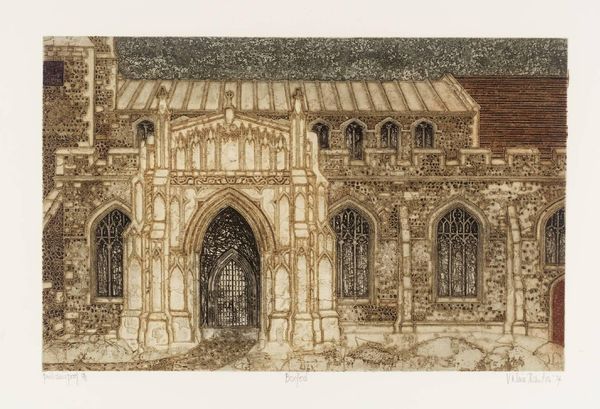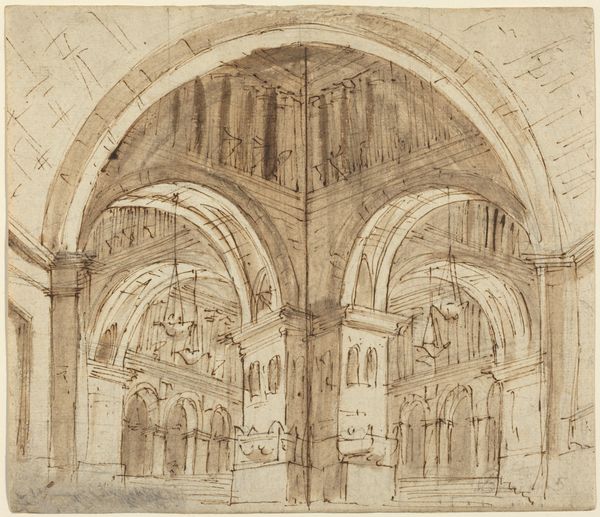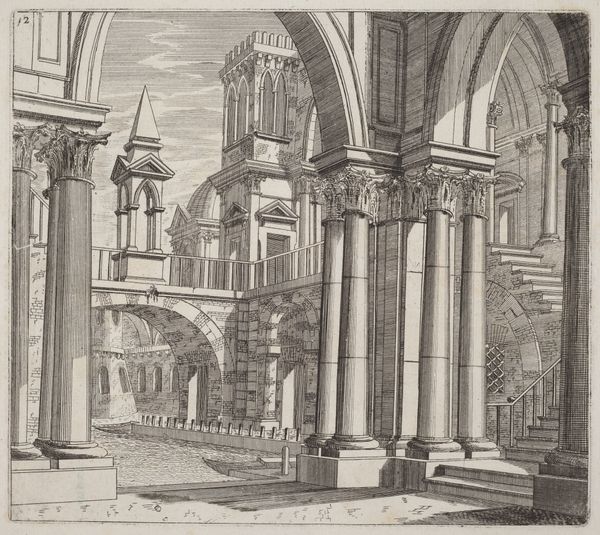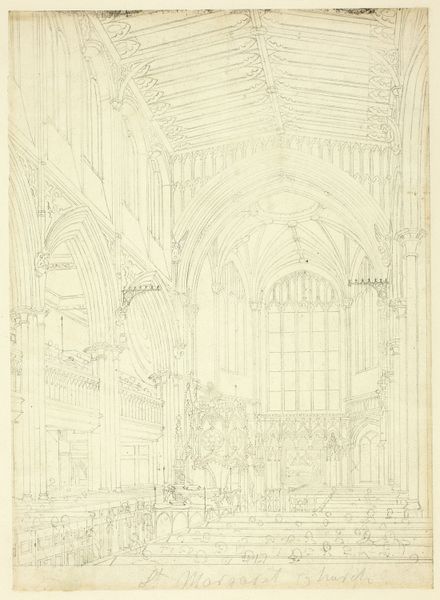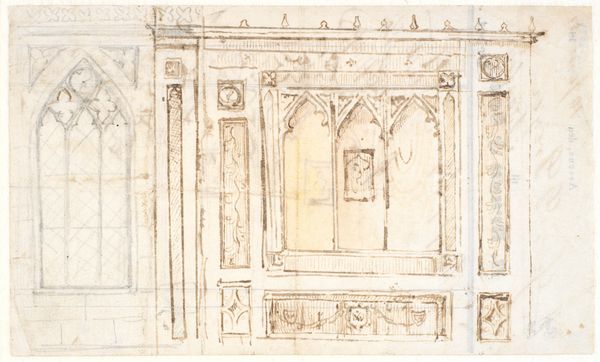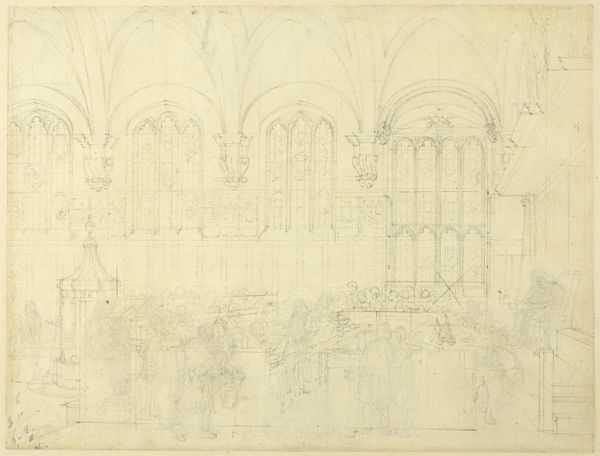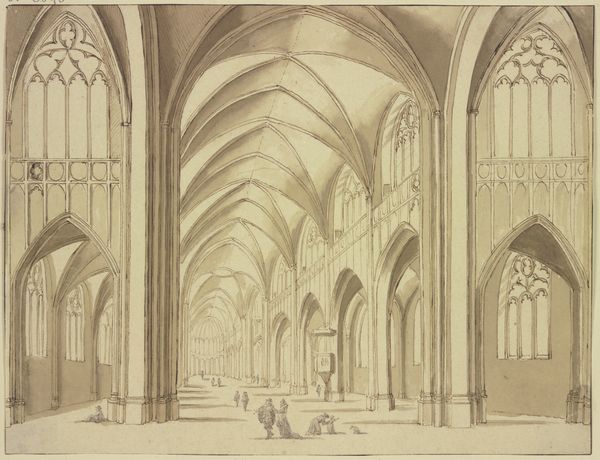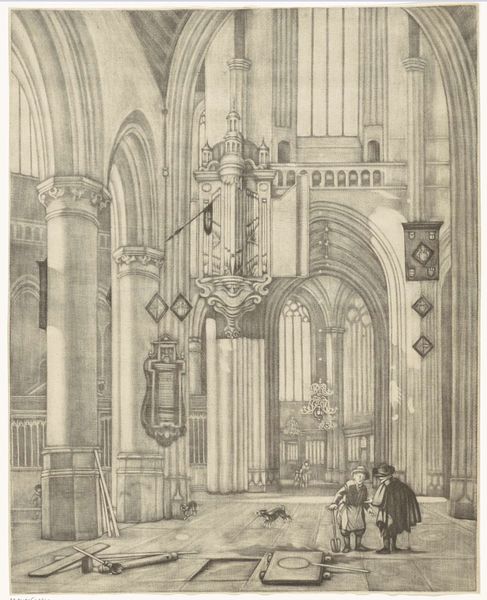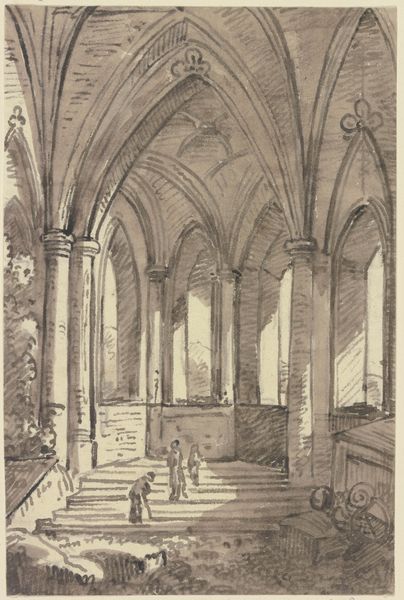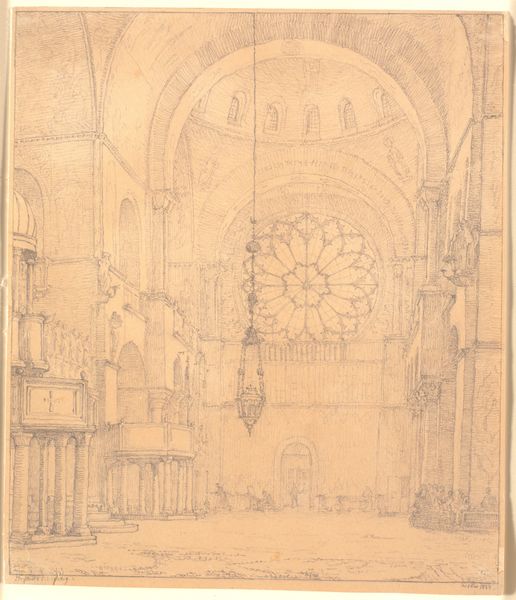
Dekoration til balscenen i Giojas opera Bolmondo, udført til Teatro di Torre Argentino 1814 1812 - 1816
0:00
0:00
drawing, watercolor
#
drawing
#
neoclacissism
#
landscape
#
watercolor
#
history-painting
#
watercolor
Dimensions: 610 mm (height) x 458 mm (width) (bladmaal)
Curator: Francesco Cocchi’s watercolor drawing, created between 1812 and 1816, titled “Decoration for the Ballet Scene in Gioja's Opera Bolmondo, performed at the Teatro di Torre Argentina in 1814,” depicts an elaborate interior scene. Editor: It's beautiful, although almost monochromatic. It evokes a very strong sense of the theatrical, which I guess makes sense given its connection to the opera. There's also a certain melancholy about the muted colors, like faded grandeur. Curator: Indeed, the artist's deft use of light and shadow certainly reinforces the architectural forms while highlighting the interplay between the imagined opera setting and Neoclassical artistic principles. Look at how the colossal columns frame the vista, almost like a stage. Editor: And those columns are fascinating. They represent the patriarchal power structures of the era and speak to the hierarchies of artistic and social institutions. Neoclassicism, though seemingly objective and clean, functioned within political regimes. Were there discussions of democratization and revolutionary reform expressed through performances? Or only a restoration of the status quo? Curator: What's captivating, too, is Cocchi's exploration of depth through meticulous detail in rendering windows and architectural elements. He achieves spatial complexity, layering the interiors so that our sight extends far beyond the presented room. Editor: Exactly! It creates the illusion of progress while simultaneously hiding historical baggage, of colonial power and artistic traditions from antiquity employed in its assertion. Curator: Yet, from a formal standpoint, the rhythmic repetition of architectural motifs is visually pleasing. The windows, the columns, create a sort of symmetrical dance. Editor: However, that ‘dance’ is a rigidly choreographed minuet, right? The symmetry isn't organic, but imposed to project stability. How do these lavish interior scenes in opera then reflect, challenge, or distract from contemporary audiences of early 19th century? Curator: Whether intended to celebrate power structures or critique them, the aesthetic effect remains thought-provoking. Cocchi's illustration, for us today, brings an intense dialogue. Editor: Absolutely. It leaves me to reflect how past cultural productions continue to perpetuate norms and values, which demand deconstruction.
Comments
No comments
Be the first to comment and join the conversation on the ultimate creative platform.
